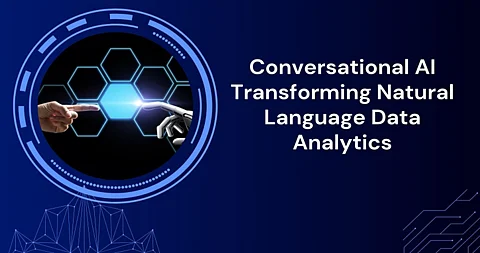

This modern conversational AI is changing the very business frontiers that involve interaction with complex datasets and allows non-technical users to analyze data. In a premier piece of research, Venkata Narasimha Sagar Gandha explores how natural language interfaces are changing enterprise analytics through real-time insights for decision-making and collaboration on data-driven parameters. His conclusion: AI-based pathways leveled-the-field to access data and democratize analytics with organizations.
Will" have been trained on data that are stagnant till October 2023. Hence, there are aspects requiring restructuring, preparation, and beautification." Organizations are witnessing an explosion of data, thereby rendering conventional data analysis techniques unfit for purpose. Studies indicate that data scientists spend almost 45% of their time in data preparation and cleaning instead of deriving meaningful insights from it. Also, employees are sometimes delayed even in accessing critical information, causing a weekly loss of 6.5 hours owing to inefficient processes for obtaining data. This causes delays in decision-making and hampers the business's agility.
Technical complexity becomes another huge hindrance: 82% of data professionals need to be proficient in 3 or more programming languages, making advanced analytics tools harder to learn than ever. This results in a huge knowledge gap whereby organizations are forced to excessively rely on their specialized data teams, which creates bottlenecks and further delays operations.
Conversational AI is transforming analytics by enabling users to interact with data using everyday language. Natural language processing (NLP) models now achieve up to 95% accuracy in understanding business queries, making it possible for non-technical employees to retrieve and analyze data without needing advanced technical skills.
Organizations that have implemented AI-driven analytics tools report a 3.5x increase in data-driven decision-making across all levels. Middle management, in particular, has embraced these solutions, with adoption rates reaching 76%. This shift toward self-service analytics reduces dependency on IT teams and accelerates business operations.
By integrating conversational AI into enterprise analytics, businesses can process complex analytical queries in a fraction of the time. Standard queries now take an average of 2.8 seconds to process, while more sophisticated analyses are completed in just over five seconds. These efficiency gains translate into a 65% reduction in time spent generating business reports and a 73% decrease in data access bottlenecks.
Additionally, AI-powered analytics tools offer predictive insights, allowing businesses to anticipate trends and make proactive decisions. Reports indicate that 79% of business users can now perform trend analysis independently—tasks that previously required data science expertise. AI-driven solutions also provide high accuracy in domain-specific analytics, with retail inventory forecasting achieving 93% precision and healthcare data queries reaching 88% accuracy.
The implementation of conversational AI in data analytics is leading to significant cost reductions and efficiency improvements. Organizations report a 35-45% decrease in operational expenses due to automation, with AI-driven analytics platforms handling up to 85% of routine queries without human intervention. This shift not only reduces labor costs but also allows teams to focus on more strategic initiatives.
Furthermore, customer experience has seen notable improvements. AI-powered systems reduce response times by 78%, and users report a 92% satisfaction rate with AI-driven interactions. These platforms also demonstrate impressive scalability, managing up to 1,000 simultaneous queries while maintaining 99.9% uptime.
Various applications are now possible for conversational AI. For instance, it finds different enterprise domains ranging from sales and marketing to operations and finance. For example, AI-enabled assistants improve the accuracy of query processing by 70% in sales, thereby saving representatives around 5.2 hours per week spent on data-related activities. It also helps improve the precision of forecasters, with AI models getting 85% accurate in predicting deals.
Meanwhile, marketing teams take advantage of this kind of artificial intelligence in analyzing campaign performances, which now take 62% less time in analysis and 45% better targeted.
As an example, AI-enabled lead scoring has resulted in converting 52% more leads, further promising to continuously improve marketing optimization.
As AI keeps evolving, so will the role of such technologies in organizational analytics. With further advancements in natural language processing and machine learning, there will be contextual ability on the part of business queries that will facilitate even more precise and instinctive interaction with data.
The shift toward real-time insights is also creating competitive advantages with businesses reporting a 39 percent increase in organizational levels where data-informed decisions have been made in the whole business spectrum. Already, organizations are achieving significant improved agility in decision-making; AI-powered tools reduce decision cycle times by 42 percent in addition to improving forecast accuracy by 37 percent.
In conclusion, Conversational AI is now changing the way organizations use data-from access to analysis and, finally, action steps. With this, technical and non-technical users can talk to each other more freely on certain analytics features. AI-enabled analytics will democratize data insights without needing technical skills; improve operational inefficiency, and facilitate informed decision-making. As Venkata Narasimha Sagar Gandha notes, using AI in business seamlessly brings the future of business intelligence to not just its elevation but also lets enterprises optimally exploit data with ease and accuracy.
